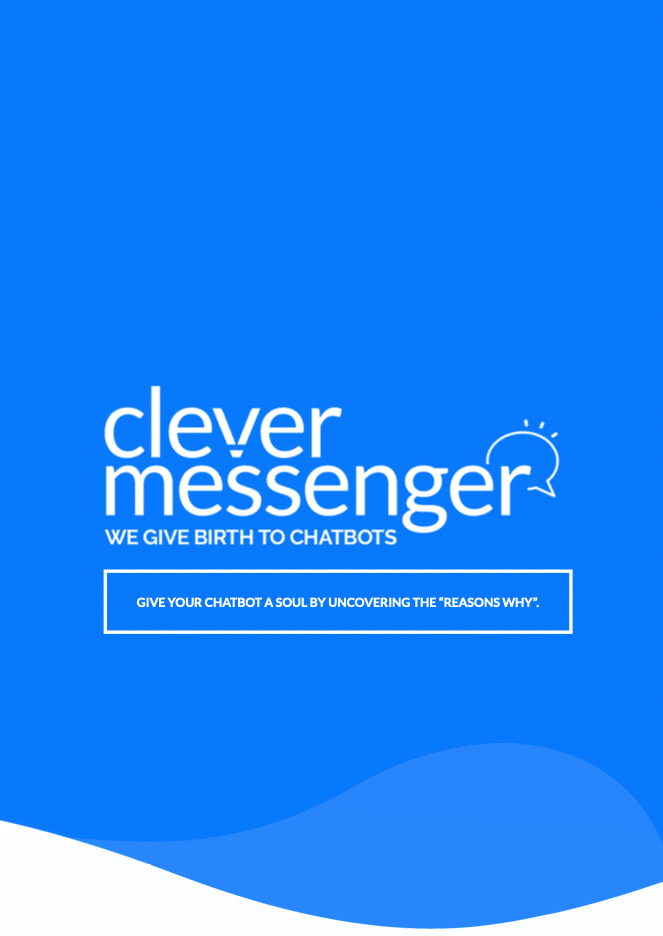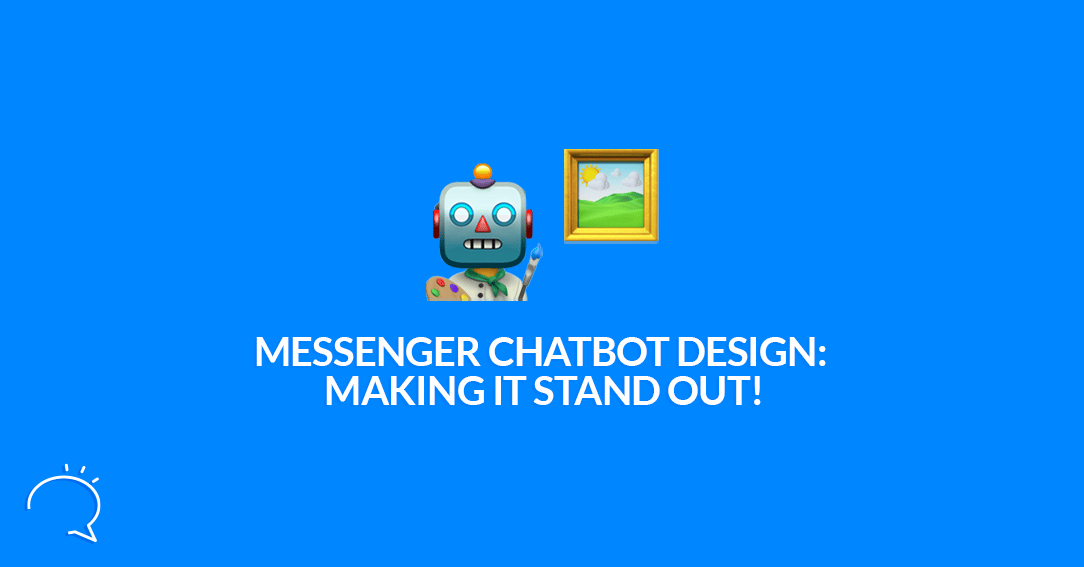Ever thought about putting little extra attention into your Messenger chatbot design? For sure, Messenger chatbots are impactful in the most basic form. They already improve the way customers engage with your business, and they’re able to streamline operations to enhance workflows. But, much like tailoring a couture dress, designing house interiors, or building architectural landmarks, when creating your chatbot it should follow some sort of design process. In this article, we’re taking a look at the principles of Messenger chatbot design, as well as some processes you need to keep in mind while building out your chatbot. Let’s dive in!
The Principles Of Messenger Chatbot Design.
What makes a well-designed chatbot different? What makes a well-designed chatbot stand out from the rest? These are questions that may arise from time to time, and perhaps, just perhaps you’ve already thought about this before while you were building your chatbot. And that’s a good thing! Because a great Messenger chatbot design determines the success of how your business use this amazing innovation. Look, while chatbots debuted decades ago, Messenger chatbots are still very young. But, since their inception, chatbot builders have been following common building and design practices. This not only shows that chatbot design matters but it’s also most likely one of the core reasons why chatbots made it all the way here.
Messenger chatbot design is all about giving your chatbot personality. In fact, conversational AI specialist Casey Phillips discusses this point too. He said:
“The art of successful conversational design is the practice of creating a conversational experience that provides value and benefits to users that they won’t get from a traditional, non-conversational experience. For example, a well-designed chatbot could help users get answers to FAQs faster than they could from a traditional search-driven experience.”
Over at Clepher, we couldn’t agree more with this statement. See, we believe that every person who builds their chatbot essentially becomes a designer. Regardless of the chatbot-building platform you use, creativity is an important factor when building your bot. Luckily, with Messenger chatbots, it’s easy to get creative juices flowing and reach the end goal; enhancing the user experience.
A lot of businesses take this to heart. Disney, for instance, has a great creatively designed chatbot. While it’s nothing short of what you’d expect from Disney, note that they’re confined to the same functions and features as you do. Just like LG Electronics who are creating personal connections while introducing their products in their chatbot. Or St. Ives, a brand of Unilever and leader when it comes to brand awareness… showcasing it all with their Messenger chatbot. Multiple ways to communicate, create awareness, and even help people through chatbots. But, again, just like these big companies, your amazing business is confined to the same principles. Let’s look at some of these chatbot principles right now.
Messenger Chatbots Can’t Be Dull
Literally anyone can get technical with chatbots, producing the best responses, at the most convenient time. But, it’s all in vain if doesn’t remotely resemble a human interaction. Chatbots must have a personality. Whether it’s an extension of yourself, partly based on your personality, or simply a made-up character, interacting with a chatbot can’t be dull. That’s why most people opt for a witty chatbot with a sense of humor. But, you can find chatbots from other businesses that even take it a bit further, like enabling activities and games inside the chatbot. I mean, wouldn’t it be cool, to have a customer play a simple card-guessing game while he waits for a human to enter the chat?
They Should Be Upfront & Personal
Nowadays, most people know that they are talking with a chatbot the minute they enter a conversation. So while it’s always good to mimic certain human traits, be upfront about it and welcome people by telling them they’re talking with a chatbot. It’s a great way to insert some wit and humor already right out of the gate. Why not add in some personalization and emojis to really set the tone of the conversation. Of course, bots should be smart enough to “read a room”. For example, a customer who is frustrated with his purchase isn’t looking to be humored. They’re seeking help, understanding, and of course, a solution.
They Should Be Spontaneous
Although Messenger chatbots with an average design still do wonders for your business… I gotta admit, they do sound like robots. And if you’re looking to spice things up, spontaneity is vital. In the end, people love to talk to a witty chatbot with a good dose of humor that gets the job done. Of course, it depends on the seriousness of your business, I mean adding humor and wit to a chatbot for an attorney is probably not the way to go. To have your chatbot stand out, it’s best to keep spontaneity going, and you can do this simply by having your chatbot guide the conversation in a proactive manner. A killer of spontaneity would be adding dead-end questions to your chatbot, so something to keep in mind when you’re (re)designing your chatbot.
Here’s quick little example:
Prefer this:
“Hi there [FIRST NAME], glad to serve you. What kind of pasta would you like to order?”
Over:
“How can I help you?”
In the first example, the bot uses personalization, and it’s already guiding our hypothetical customer towards a possible end goal. The second example is just very open-ended, with a lot of room for error.
They Should Be Secure
Chatbots will always source out customer information. Chatbots in general use this to determine the best answers to the questions customers may have. As well as personalizing the entire experience for people talking with the chatbot. This, of course, comes at a cost. Since you’re “playing” with the data from customers it should be secure. Not only is their data, something in this day and age you need to respect, but losing it would make you and your business look bad. That’s why, when designing your chatbot, you should always apply security best practices.
The good news is that a chatbot on Messenger is practically secure, it has end-to-end encryption that’s considered unbreakable. However, when you use a chatbot platform like Clepher, you need to make sure that they’re doing everything to keep the data of your subscribers secure as well. Just in case you’re wondering, we do!
We actually go a step further than that and provide you with tools to be fully compliant with privacy laws, like the GDPR as well. For example, one of our actions cards allows you to send the customer data you have on file on them to them. Why is this important? Well, under the GDPR (and other privacy laws) you’re required to send this upon request. Not every chatbot builder out there does this… And when it comes to these things, you want to be on the good side of Johnny Law.
With that said, let’s have a look at some of the best practices when it comes to bot design.
Messenger Chatbot Design: The Process

Give Your Chatbot A Soul
Knitting embroidered pieces do not happen in an instant. Rome wasn’t built in a day. The same tendency applies to the Messenger chatbots you create, because it simply takes time to create a chatbot that your customers will love. Start simple, then expand. Think of the reasons why you’re building a chatbot, and improve along the way.
On that note, we created little guide, called “Give your Chatbot a Soul” that will help you find the core values and the goal of the chatbot. Answering these 9 questions will get you a head start when it comes to chatbot design. In fact, we believe if you keep these answers handy at all times, you will always end up on the right side; attaining the chatbot goal while improving user experience.
>> Download “Give Your Chatbot a Soul” PDF here.
That said, in this section of the article, you discover some of the other chatbot fundamentals that should help you design a better chatbot right out of the gate.
Adding Story
Whenever you can, tell your customers the story that led you to do what you do, and eventually brought into existence the bot they’re talking with. This way, you automatically create a deeper connection with your customers. And done right, it will impact your business on a different level. This because by telling stories, something magical happens… People easily relate to stories, and through them, you can build some meaningful connections, and using the story itself as the vehicle to get your point across.
Personality & Tone
Apple has a chatbot named Siri. Amazon has a chatbot named Alexa, and while both are not on Facebook Messenger, they both have a personality, and it starts with their name. How’s your chatbot called? What his, her, or its name? What’s the tone? Cranky? Funny? Melancholic? Joyous? Does your chatbot only respond to questions? Or, do they also take customers to the products and services you offer? Find out the goal of your Messenger chatbot, who your audience is, what they’re talking about… Think of this while you design your chatbot. Pro tip? Use the guide shared earlier.
Invoke Encouraging Emotions
Since you, or someone on your team, will be the one “programming” the chatbot, it’s probably a good idea to go over the chatbot messages a couple of times before you make it live. This enables you to sprinkle in some human-like traits that can help invoke encouraging emotions. Among the things you can do is to mention the customer’s name, or greet them, make a joke… Perhaps inject the element of surprise and use a couple of emoji in a specific order? Like 🐘 💨 ? It all helps in creating a connection with your customer.
Visuals, Visuals, Visuals
Lots of businesses are doing this, and you should too. When reading a book or a magazine, don’t you feel more enticed when you see pictures? It’s a cliche but a picture does say more than a thousand words. That’s why you should definitely consider adding Images, GIFs, animations, and memes to your conversation. Hell, especially if you own a shop online, selling tangible items like t-shirts, shoes, or mugs… make sure you keep showing off those items.
Let The Chatbot Start The Help
One of the common mistakes people tend to make when it comes to creating a chatbot is making them TOO conversational. Never-ending messages, too much text per message. It’s a rookie mistake. When it comes to chatbots, it is crucial to keep the customers engaged. Yet, it is also essential to fulfilling the aim of helping them solve their problems… Keep messages short. To the point. And give them ways to continue the conversation with buttons, as well as giving them a way to notify a human.
The Messenger chatbot of Universal Studios Orlando Resort is conversational and prompt. When the user steps up at the “Get Started,” their chatbot does not only introduce itself. It also already instructs the user how to get around depending on what they might need. The advantage of this is? It avoids overwhelming the customers.
Designing Chatbots With Clepher
When it comes to choosing the right platform to create your Messenger chatbots, taking careful steps imperative. Does the platform you’re looking at providing all the features you need to design a chatbot that stands out? Does it have a Visual Builder, allowing you to map out your conversations before they even started? See, not every chatbot builder and marketing suite are created equal. But, with Clepher, you will have all the tools you could possibly want to make everything we’ve discussed in this article a reality.
The best thing is probably the no-coding part, at least that’s what our current customers say, they just love to visually build out their chatbots. Yup, by simply dragging and dropping “cards” to your canvas, you have a bot set up in no time. Why not give Clepher a try, 100% risk-free, today?
Related Posts



